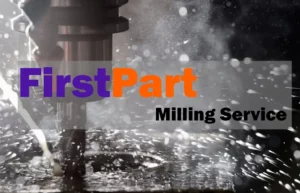Heat sinks are important components of electronic and mechanical devices, serving the purpose of heat dissipation and cooling. Heat sinks are widely used in laptops, computers, aircrafts, automobiles, engines and many other devices to ensure that working parts function without burning out.
Today, we take a look at a part of the 3D printing industry that is slowly gaining adoption – 3D printed heat sinks! Just as other conventional heat sinks work, 3D printed heat sinks help in cooling components. At the same time, 3D printing makes it possible to design heat sinks with more complex designs in lighter and smaller forms.

Types of Heat Sinks
There are two main types of heat sinks – active and passive. Active sinks often come with a power supply and a fan in their design, while passive heat sinks only serve the purpose of conventional heat dissipation without any mechanical components.

Heat sinks come in an array of form. Some include Extruded, folded fin, bonded fin, cross-cut, active fan and stamped heat sinks. Heat sinks are characteristically made from plastic and metal materials. Aluminum and copper are the most common materials for conventional heatsinks.
3D-Printed Heat Sinks
Ongoing research and trials have pointed to the success of using 3D printers to manufacture heatsinks. Two of such researches were done at Oak Ridge National Laboratory and the University of Tennessee. The results of such researches has demonstrated the feasibility of using 3D printing to achieve complex heat sink designs and the efficacy of the 3D-printed Aluminum heat sinks relative to conventional/standard Aluminum heat sinks.
The overall benefits of 3D-printed heat sinks over standard heat sinks revolves around more than manufacturing solutions. Here are 5 ways 3D-printed heat sinks give product engineers an edge in component design:
1. Design versatility
3D printing and additive manufacturing makes it possible to achieve the most complex heat sinks design for any mechanical or electronic component. Through the 3-dimensional avenue in which the printer works, it is possible to conceive, prototype and execute heat sink designs with the most complex styles to optimize heat exchange.
3D printing allows for unrivalled geometric manipulation that ultimately delivers more efficient heat sinks for all types of end-uses.

2. Material savings
Standard heat sinks are made from conventional machining and production methods that involve the removal of materials from a block of raw stock. 3D printing on the other hand, builds the heat sink from the ground up. The benefit of this method is that only required materials are utilized, layer by layer, until the final heat sink design is made.

3. Strength-to-weight ratio
Both the material options and manufacturing technique of 3D printing provides product engineers with an array of feasible materials that can deliver lighter yet stronger components in use for heat sink designs. With this, product engineers can increase both size of fans and surface areas of heat sinks without worrying about a proportionate increase in the overall product weight.
4. Design modification
With 3D printing, product designers and component engineers can quickly make modifications and changes to heatsink designs without having to re-tool or incur expensive charges. Through the 3D CAD file, users can make on-the-fly corrections to heat sink design and proceed to print updated physical iterations.

5. Energy savings
Lighter components generally mean lighter energy consumption. With properly designed 3D-printed heat sinks, the overall weight and energy requirements of electronic or mechanical components can reduce and result in cost savings.
Firstpart 3D Printing Services
Don’t own or can’t get a 3D printer? Come to Firstpart! If you’re looking to make high-quality 3D printed prototypes for a wide variety of applications. Firstpart is your one-stop-shop outsource manufacturers in China. Our industrial 3D printers are capable of making 3D parts with complex geometries at cost-effective rates. We also offer multiple post-printing solutions to help finish your parts, while our other manufacturing solutions like Plastic injection molding and CNC machine service is readily available to help upscale your project to mass production.










